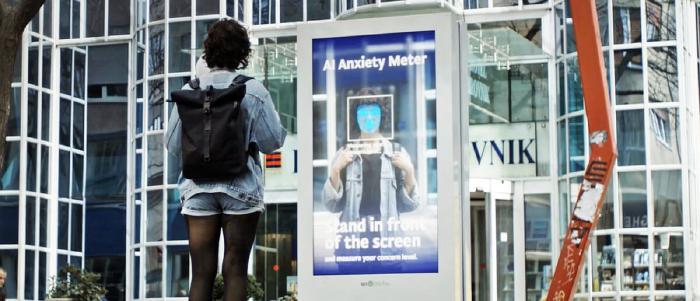
Dec 21 2023
8 min read


Mar
One business that’s been winning the customer loyalty game is Starbucks. Ask anyone what they love about it, and the first response will be about how good it feels to see your name handwritten on a cup of your daily brew. That is a simple testament to the power of personalization in marketing.
According to Segment’s State of Personalization in 2022 report, 49% of consumers say they will become repeat buyers after a personalized shopping experience with a retail brand. Talk about a sure-shot way to reduce customer churn.
There are a host of ways to boost customer experience through customizations. And digital signage is one of the most popular. Not sure how to get started with it? No problem. This blog article will tell you everything you need to know about how you can personalize the customer experience with digital signage. Read on.
One deciding factor that contributes to customer loyalty (and revenue growth) is engagement. But grabbing buyer attention is no easy feat — especially with decreasing attention spans.
That’s when digital signage comes to the rescue. Giving you the ability to display dynamic and personalized content, it’s a handy tool to have in your arsenal.
Here’s how you can ensure a tailored customer experience with digital signage.
While personalized product recommendations are common thanks to websites like Amazon, digital signage makes it even more effective. Imagine entering an outlet and coming face-to-face with a screen showing products that match your style. What a convenient way to shop, right? You can use customer data to give recommendations based on previous purchases, browsing history, or even the time of year.
Adidas has developed a new concept called Speedfactory to integrate customers into the manufacturing customers. The brand does this by letting them customize shoes on demand. It creates an interactive retail experience where digital signage is used to leverage biometric scanning technology, analyze body movement and collect hundreds of data points. This data is then used to guide users to the brand’s new AM4 shoe, urging them to purchase.
This method is a great way to improve the gift-giving experience. Especially because customers can choose their own gift boxes, select the items that go into the box, and even add personal touches like customized messages or wrapping. This level of personalization makes the gift even more special for the person you’re giving it to.
Many QSR chains and restaurants are also enhancing customer experience through ‘Make Your Own Meal’ kiosks. Everyone likes a good ol’ Subway salad. And the reason they’re so popular is because the brand lets customers choose exactly what goes into it. Here’s how McDonald’s Singapore’s “CREATE YOUR OWN TASTE” Kiosk works:
Other creative ideas for product personalization in retail could include allowing customers to customize clothing by selecting fabrics, colors, and styles, or letting customers design their own jewelry by choosing the materials and design elements.
When it comes to leveraging personalization, nothing beats creating targeted and contextual content that resonates with your audience.
One way to do this is through programmatic targeted ads. Through these, you can use data on your customer’s demographics, shopping behavior, and interests to display relevant content. For example, if a male buyer passes by your store, your smart digital signage solution can identify the person’s demographic and automatically start displaying men’s products or clothing.
Another way to personalize content is through contextual signage. It involves displaying customer information based on location, situation, or environment. For example, on a hot sunny day, smart digital signage billboards fitted with temperature sensors can be programmed to show refrigerator ads when the temperature crosses 35 degree Celsius.
This approach allows customers to engage with your content in real-time. Not only does this give them a more immersive experience, but it’s an excellent way for you to gain insights into their preferences.
Imagine a signage that allows customers to customize a product by picking their favorite color, size, and shape. It’s a sure-shot way to gain attention and add a dash of novelty to the shopping experience.
GE Lighting did this by putting up interactive signage on retail store shelves. These helped drive awareness about the brand’s advanced LED technology and products. Customers could press different buttons to see a quick demonstration of the features of each bulb. The displays also have illuminated front graphic areas that let customers test the color and quality of the bulbs in different home and light settings.
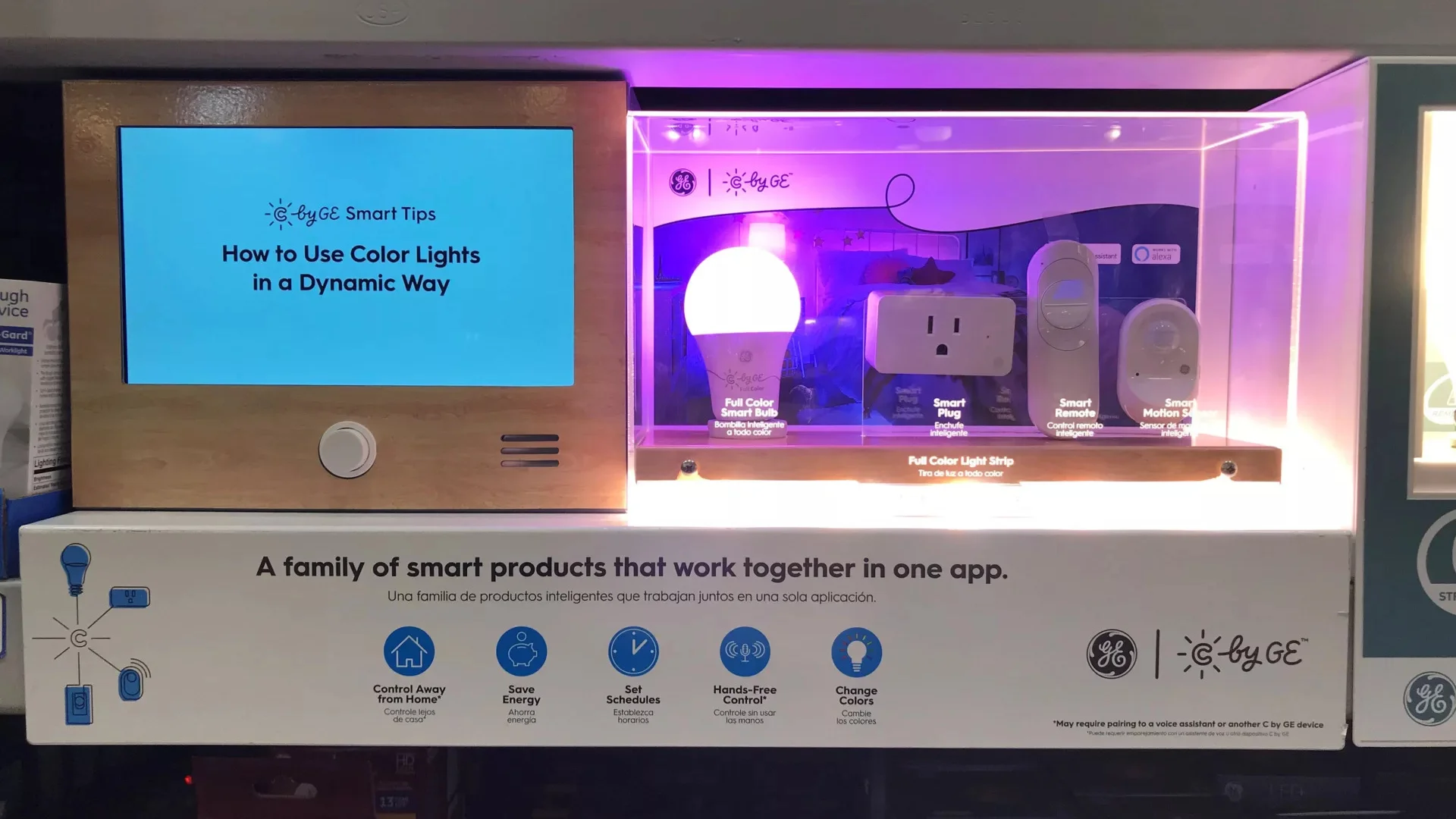
Interactive digital signage are game-changers when it comes to in-store guided navigation. Say your customer is looking for a specific brand of biscuits. Instead of finding and asking a customer representative, they can look for the product on the interactive display and get wayfinding information to locate it.
Some digital signage solutions can even help customers through virtual reality and display maps of the store.
This is an exciting new concept to provide a tailored customer experience in retail stores using digital signage. By using augmented reality technology, retailers can create a virtual fitting room experience that allows customers to see how clothes look on them without actually having to try them on. This technology can be particularly useful for fashion retailers who want to offer their customers a more personalized shopping experience.
Several apparel brands and retailers have jumped on the bandwagon. These include big players like Walmart, Shopify, and Amazon. The rooms can even be seen out in the open on the streets of Shanghai!
Pricing your products differently might sound counterintuitive, but it’s a great way to reward your loyal customers. And get them coming back for more. Use data on their spending habits and purchasing history to offer personalized pricing for individual customers. This could be in the form of discounts, special offers, or customized packages tailored to individual customers.
Here is an instance: if you see a customer buying a baking tray, you could offer them a pair of oven mitts at a discount, and they’ll be more likely to buy it.
Now that we’ve explored the various methods of personalizing digital signage for customers, it’s time to show you how to get started. In this section, we will give you all the good stuff — actionable steps, tips and tricks, the best tools, and more. Let’s dive in.
Use the SMART goal framework to create a roadmap for your personalization plans. This will help you understand what activities to prioritize and how to measure their output. Make sure each goal follows the 5 golden parameters:
Specific
Measurable
Achievable
Relevant
Time-bound
An example of a SMART goal for personalized digital signage could be: increase sales by 10% in the next quarter by displaying personalized product recommendations based on customer purchase history.
This is a crucial step, so you should devote your maximum effort. By delving into your customers’ interests, behaviors, and preferences, you can better customize their experiences. But how do you do this?
Start with zero-party data.
This is data that a customer shares with you intentionally. You can collect this by conducting surveys, quizzes, and website widgets. Imagine you want to set up a personalized wayfinding display to help visitors navigate a large shopping complex.
Install a wayfinding kiosk that users can interact with in real-time. The signage will offer them a list of categories to choose from. If the user selects sporting goods, the kiosk can provide a list of stores in that category, identify their location on the map, and show any promotions or offers available at those stores.
By leveraging this zero-party data, you can personalize customer experience without worrying about GDPR, CCPA, and other privacy regulations.
Here are a few more tools you can leverage to collect data and gain a deeper insight into the minds of your buyers:
In-store cameras: Install cameras in your store to understand which areas are most popular, which products are being looked at the most, and how long customers spend in each area. Use this to optimize digital signage placement.
Heat mapping software: Use physical heat mapping software to track customer movements and interactions with your signage. This data will also help you understand the best areas to set up digital signage screens.
Interactive kiosks: Remember to leverage your interactive kiosks to collect data on customer preferences and behaviors. This includes information on what type of products they’re searching for and what questions they are asking. Use this to create a tailored customer experience and optimize signage content.
You can also use offline techniques like user interviews and focus groups to get more detailed information on what your customers like and why.
No matter how well you strategize and personalize, it won’t create the right impact unless you ace execution. And the only way to do this is by choosing the right tools to take your marketing efforts from zero to hero. Consider these factors before zeroing in on your technology of choice:
Data integration: Ensure your digital signage software integrates with existing customer data sources, such as your CRM or website analytics.
Content scheduling: Choose a tool that lets you schedule content based on customer behavior or other triggers.
Audience analytics: Find solutions that offer insights into customer behavior. This can include metrics like dwell time or engagement rate.
Once you have a clear idea of your goals and target audience, it’s time to churn out some quality content they’ll relate to. This could include personalized messages like a welcome note with their names to make them feel valued—or even tailored offers based on their purchasing history.
Strategies are rarely perfect on the first go. You have to keep experimenting to see what works better. This can be done through testing, recording the results, and adapting. This will help you provide a tailored customer experience that’s hard to forget.
During this process, make sure you perform multiple rounds of A/B testing. For context, this is a strategy where you create two versions of your digital signage content and test them with different audiences to see which performs better.
Here are a few other metrics you should test:
Content engagement: Gauge how long customers are spending viewing each piece of content, whether they are interacting with interactive content, and whether they are taking any actions based on the content they see.
Influence on purchasing behavior: Use metrics like which products are being purchased more frequently after being promoted on digital signage.
Location-based metrics: Track which screens or locations are getting the most interactions to optimize your signage placement and content.
Personalization effectiveness: Keep an eye out for tracking metrics such as whether customers are interacting more frequently with personalized content, whether it’s driving more conversions, and whether customers report higher satisfaction levels.
Personalizing customer experience has become the need of the hour for most businesses that want to stay competitive in today’s fast-paced landscape. Not only does it improve customer loyalty, but it also has a direct impact on sales and revenue.
From integrating social media channels to displaying dynamic content, there’s a lot you can do to customize your digital signage content. And if you’re looking for the perfect software to complement your personalization strategy, our team at Pickcel is happy to help. Schedule a demo with us for a quick consultation.
Take complete control of what you show on your digital signage & how you show it.
Start Free Trial Schedule My Demo
Dec 21 2023
8 min read
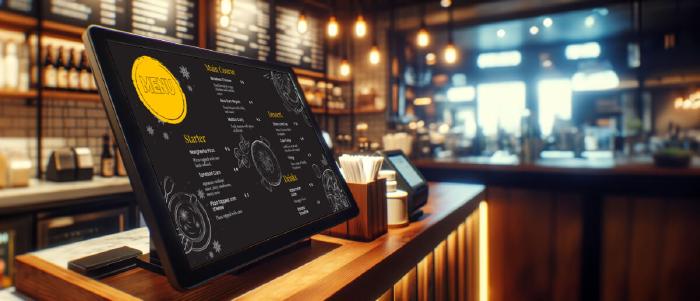
Dec 19 2023
6 min read
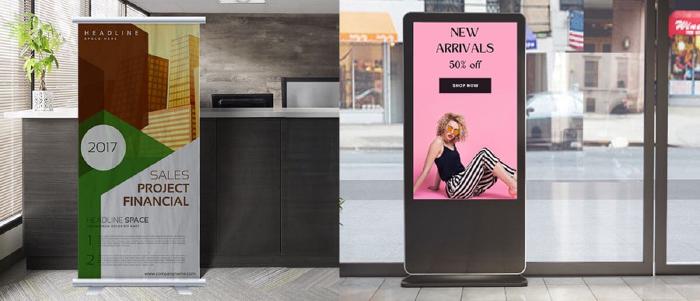
Dec 14 2023
7 min read
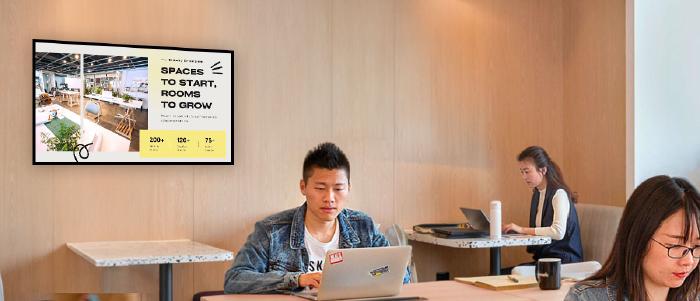
Dec 8 2023
8 min read